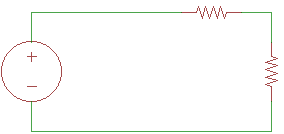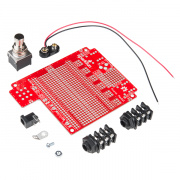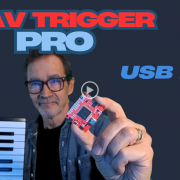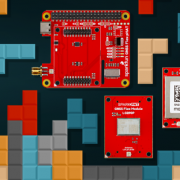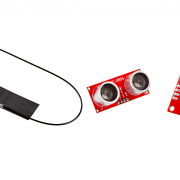T³: Adventures in Science – Series and Parallel Circuits
There are two basic ways to connect electronic components with two terminals: series and parallel. In this episode, we examine those two types of circuits and show how to calculate equivalent resistance.
Most basic electronic components with two terminals, like resistors, can be connected in one of two ways: series or parallel. These connections allow us to mix and match different values of components (or even different components!) to achieve some desired behavior in a circuit.
In the video, we examine how resistors can be connected, and how to calculate the equivalent resistance of each type of circuit.
In a series circuit, components are attached end-to-end and share one common node:
To extend it to more than one resistor, we can calculate the effective resistance (i.e. equivalent resistance) of resistors attached in series by adding up the resistances:
In parallel, components share two common nodes, and current has the option of flowing through one of the components:
From that, we can calculate the equivalent resistance of the resistors attached in parallel by taking the reciprocal of the sum of reciprocal resistances. The following equation has been extended to include any number of resistors:
If you would like a written refresher on what a node is and how to calculate equivalent resistance from series and parallel circuits, we have a written tutorial created by our very own Pete:
Series and Parallel Circuits
That's the fifth and final (for a while) Adventures in Science concept video! Thank you all for the great feedback. I need to work on some other things for the upcoming holiday season, but if we get back around to doing more of these, what other concepts would you like to see covered?
Interested in learning more foundational topics?
See our Engineering Essentials page for a full list of cornerstone topics surrounding electrical engineering.
